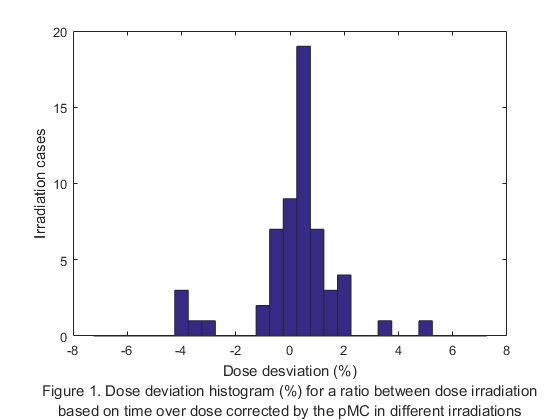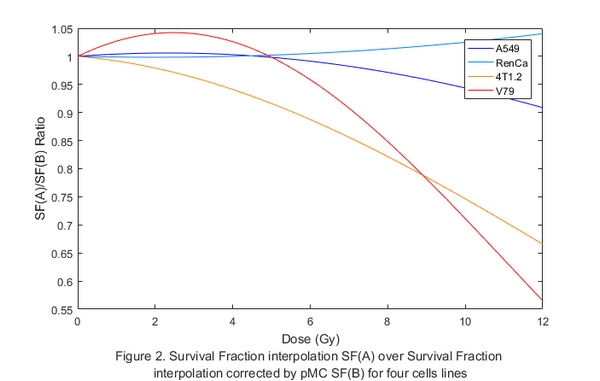RX tube without monitoring chamber, dose corrections and implications in radiobiology results
Juan Ignacio Lagares,
Spain
PO-1750
Abstract
RX tube without monitoring chamber, dose corrections and implications in radiobiology results
Authors: Juan Ignacio Lagares1, Marta Ibáñez1, Marta Oteo1, Miguel Ángel Martín2, Natalia Chamorro3, Pedro Arce3, José Manuel Pérez3, Miguel Ángel Morcillo3
1CIEMAT, Technology Department, Madrid, Spain; 2CIEMAT, Unidad de Innovación Biomédica, Madrid, Spain; 3CIEMAT, Technology Department , Madrid, Spain
Show Affiliations
Hide Affiliations
Purpose or Objective
Some RX-tubes used in radiobiology studies has not monitor chamber to control the output X-ray dose. In this case the dose delivery to culture cells is based on the irradiation time controller. This could be a problem for a correct dose assignment to cell cultures and would implicate an important variation in radiobiological studies results because of X-ray tube output beam stability. To solve this, we propose the use of a conventional Ionization Chamber (IC) used for dosimetry as a pseudo-Monitor Chamber (pMC) in a reference point which is placed off axis.
Material and Methods
The RX-tube used was a MCN321 Philips model with a MG323 control system. The dosimetry equipment was a Farmer IC (Nuclear Enterprise; model NE-2571). The IC calibration was done based on the TRS-398 protocol supported by a secondary standard laboratory. The reference point for pMC was placed at a 50 cm plane from the source and 15 cm off axis. The X-ray irradiation setting was 10 mA and 250 kV, for a Thoraeus I filtration and a circular cone beam with an open angle 20º relative to the beam axis.
The absolute dose calibration was performed in a single session following these steps: a) The IC was placed in the reference site as pMC for the cell culture irradiation setup. b) The IC was irradiated a few times until the X-ray tube gave a stable response. c) The IC was place in the beam axis to measure an established absolute dose at a 2 cm depth in a plastic phantom. d) The IC was placed in the pMC reference point and was irradiated a few times to check the stability response of the cell culture configuration related to the initial measurements. e) EBT3 film was calibrated and used to establish the absolute dose in cell plates taking into account the pMC response.
Cell cultured plates were irradiated at different doses (0-15 Gy for clonogenic studies. Survival fraction (SF) was fitted to the Linear Quadratic Model taken into account both the irradiation doses based in the time calculation doses (A) and the ones corrected using the pMC measurements (B). The SF(A)/SF(B) ratio was determined for four cell lines.
Results
A calibration factor (0.071 ± 0.002) Gy/nC was established for the measurements in the pMC point. The uncertainty introduced in the pMC measurements due to the phantom dispersion for film calibration was estimated at 0.1 %. The maximum dose deviation to the expected dose without pMC correction was 5 % with a total standard deviation of 1.5 % for all the cases (Figure 1). SF(A)/SF(B) ratio showed that the differences between both considerations can imply big differences in the analysis results of the clonogenic curves (Figure 2).


Conclusion
The use of an IC as a pMC can correct and enhance the clonogenic assays and it is a simple solution when the equipment does not have a Monitor Chamber. These corrections should be taken into account because the SF interpolation results have high dependency of this small variation, especially for high doses.